The Broken Content Team: Why Traditional Content Team Structures Are Failing in the AI Era
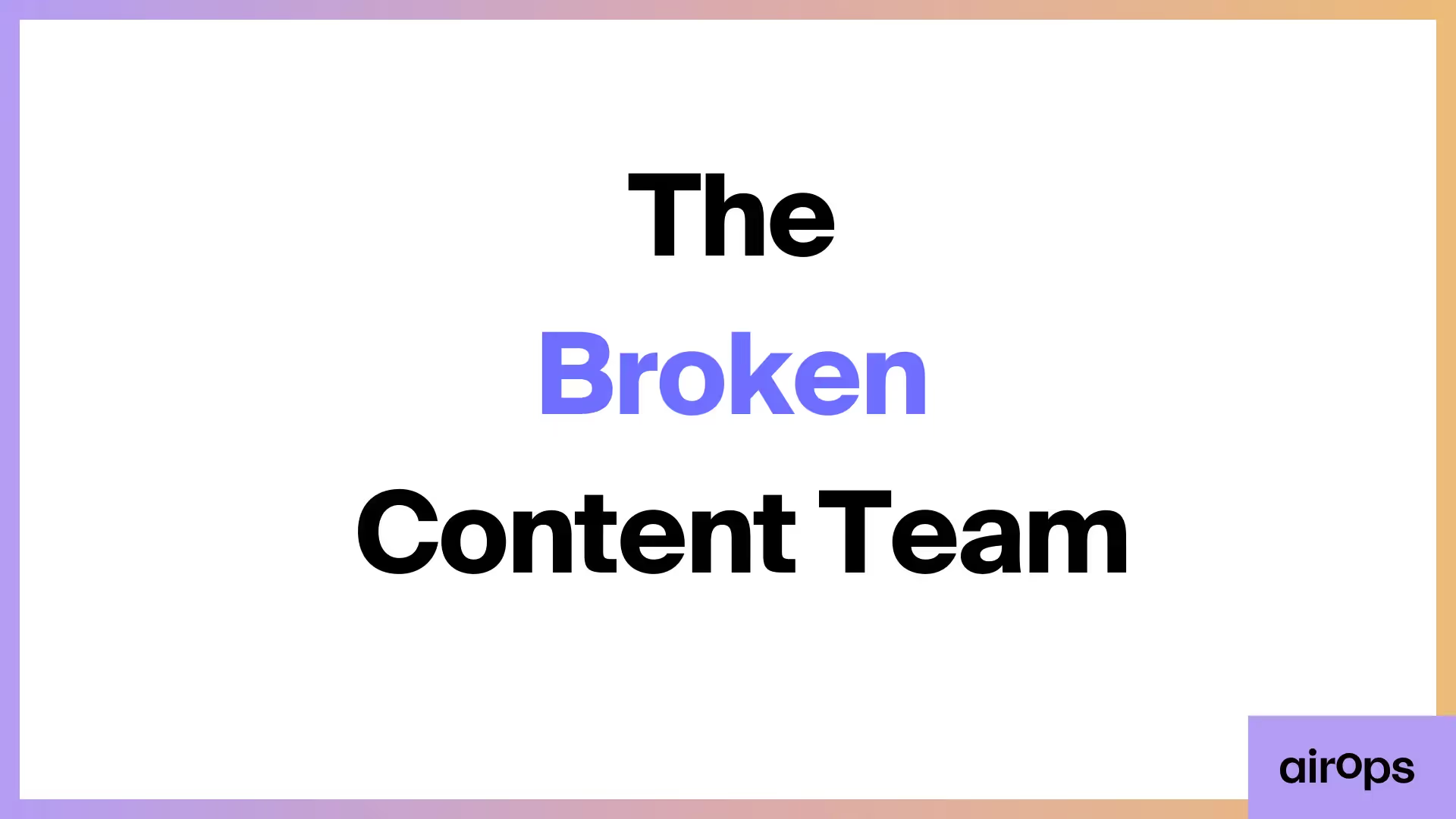
Most content teams start their quarters with ambitious goals and solid plans.
By week three, reality hits: Competitors have doubled their output, organic traffic is plateauing, and writers are stretched across too many competing priorities.
The backlog grows, quality inevitably suffers, and the quick fixes—hiring another writer, adding an optimization tool, or layering on another process—only increase complexity without solving the underlying problems.
The data reinforces this growing challenge.
- 56% of demand gen marketers report feeling significant pressure to achieve results
- 53% of content creators say it has become harder to attract visitors from search engines
- 20% of bloggers report strong results from their content efforts.
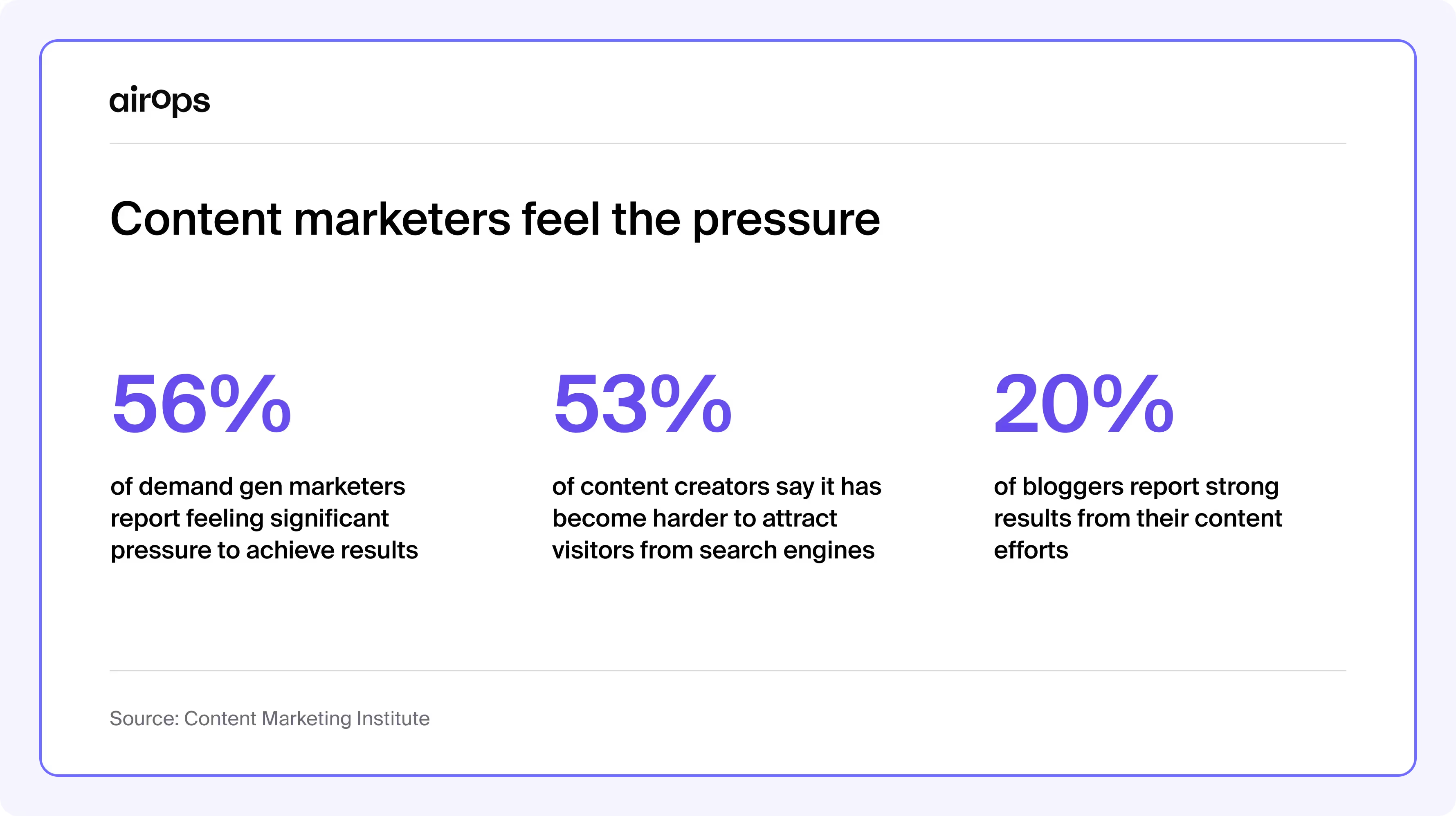
The truth is - traditional content teams, built for predictable publishing and linear growth, cannot meet today's converging pressures of AI-scale demands, rising SEO needs, and technical content requirements. Here is why current structures fail and how leaders are rebuilding for success.
The evolution of content teams
Content operations have transformed dramatically.
What started as simple blog teams managing occasional posts has evolved into complex content engines.
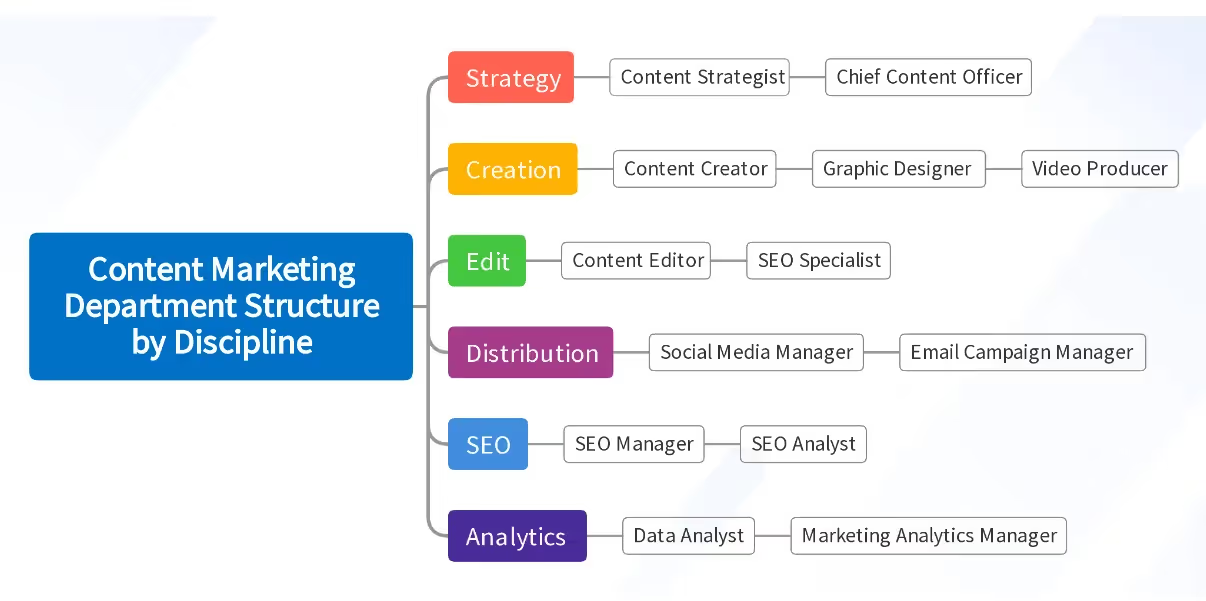
A modern content operation now typically includes:
- Editorial teams managing multiple content types
- SEO specialists optimizing for search visibility
- Social media managers adapting content across platforms
- Technical writers handling product documentation
- Content designers ensuring consistent brand experience
The pressure to produce more content has compounded this complexity. Teams that once published weekly now push for daily output across multiple channels, formats, and audience segments.
Five years ago, Gary Vee was talking about how to make 64 pieces of content per day, before AI!
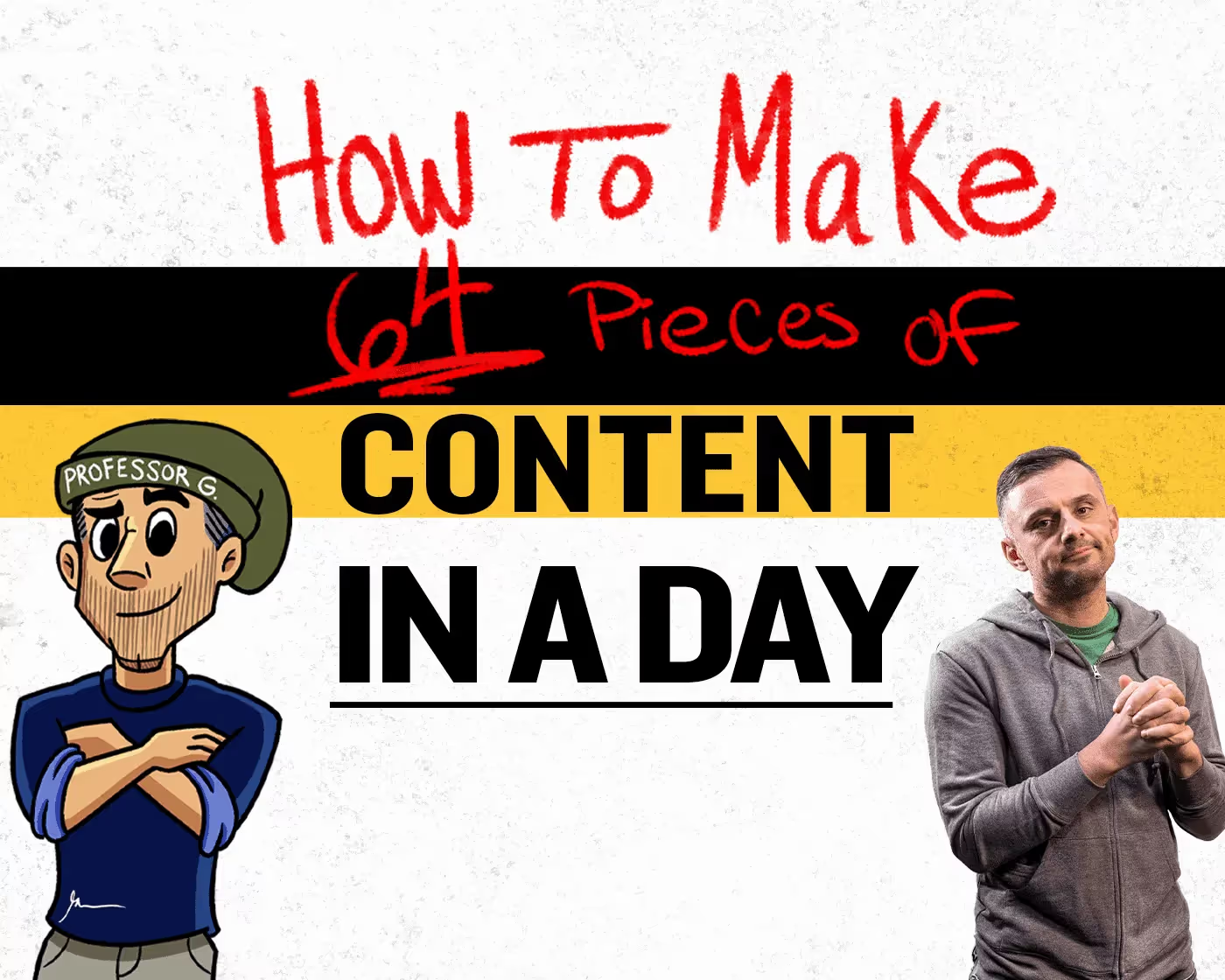
The original content team model was effective for its time. It offered clear ownership as writers managed pieces from conception to publication. Each role within the team had defined responsibilities and skill sets, while simple workflows moved content linearly from draft to publication.
This structure succeeded when content needs were predictable and scaling meant steady, manageable growth.
4 major shifts have made traditional structures obsolete
1. Explosion of channels
Content teams currently manage websites, social platforms, documentation hubs, community forums, email sequences, and video platforms - each with unique requirements and constraints.
A recent survey highlights the struggle, revealing that a significant portion of marketers feel overwhelmed:
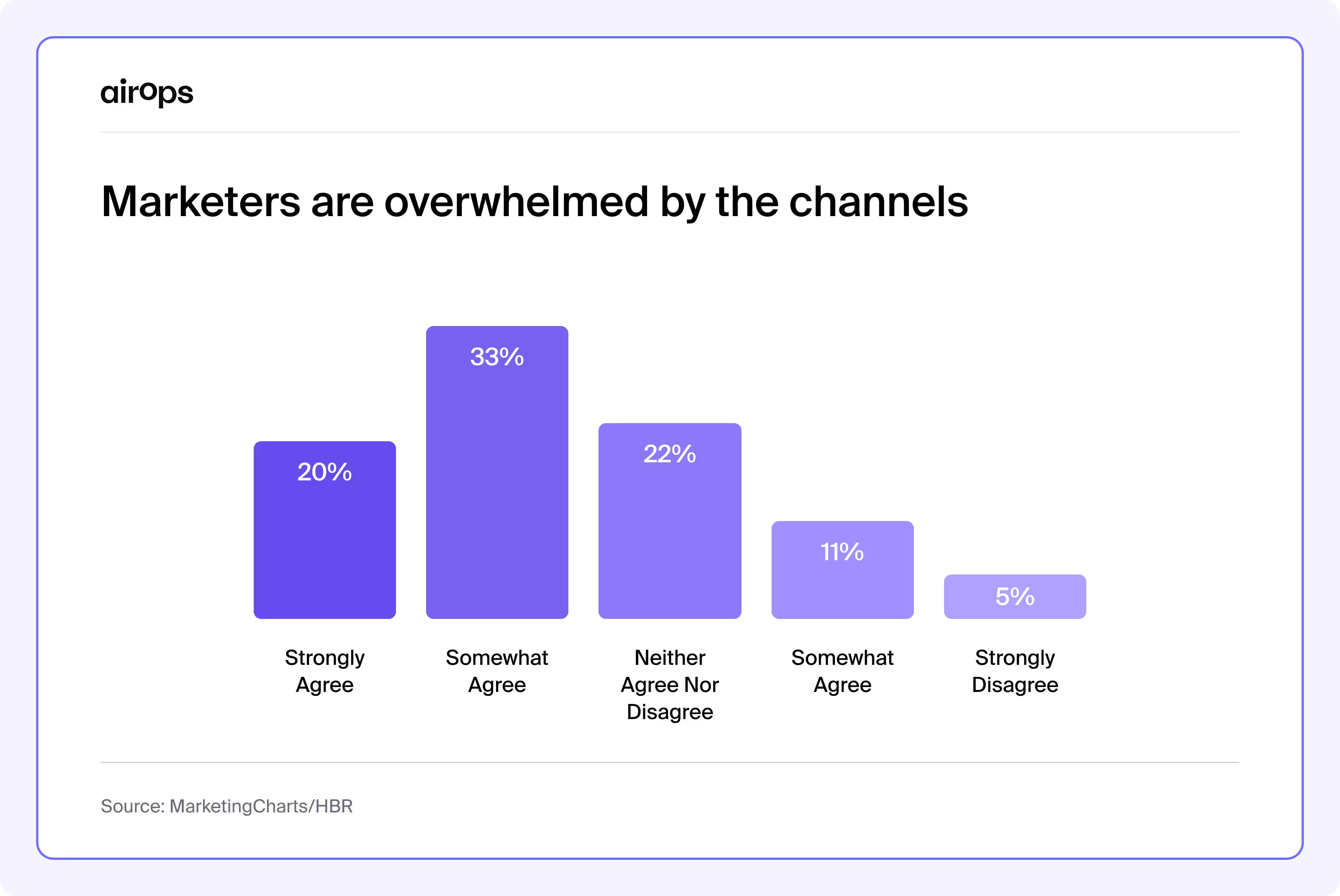
2. Rising quality expectations
Readers expect depth, accuracy, and polish across every touchpoint. Surface-level content no longer drives results. Each piece requires subject matter expertise, data validation, and a professional finish.
Riley Kaminer explains a typical viewpoint, that there needs to be that nuanced value to “good content” that doesn’t come solely from a ChatGPT output.
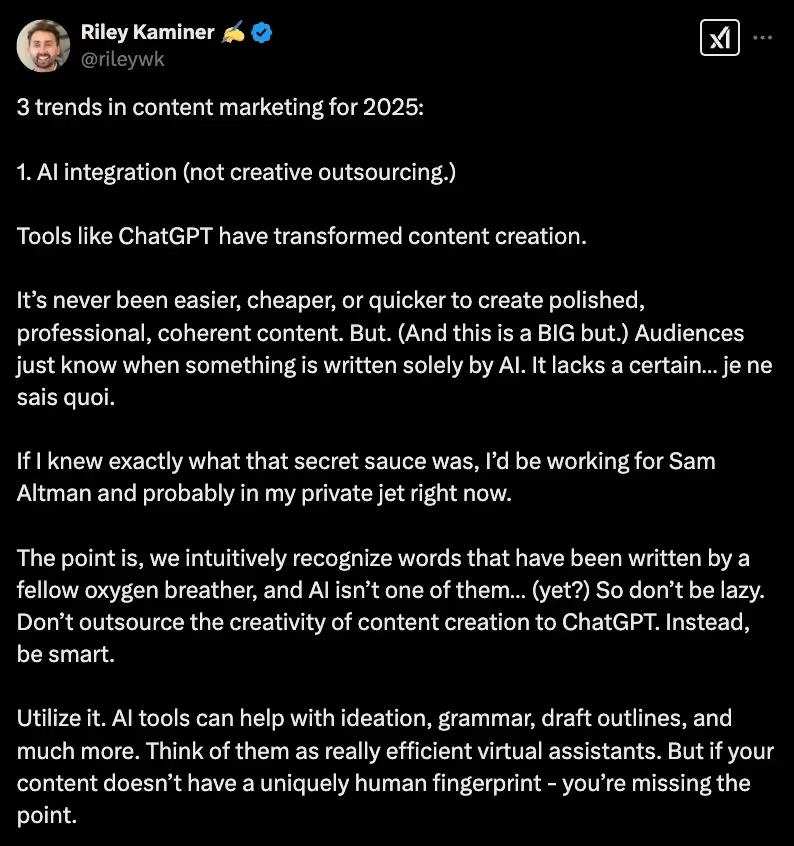
3. Speed requirements
Market opportunities demand rapid responses. Competitor launch features, industry news breaks, and market conditions shift faster than traditional review cycles can handle.
4. Technical complexity
Modern content requires deep technical knowledge. Writers need to understand product architecture, API documentation, integration possibilities, and technical implications - while maintaining accessible, engaging narratives.
Traditional content teams, once highly effective, now struggle to maintain basic output as these new demands overwhelm their operations.
3 signs of systemic failure in content teams
The breakdown of traditional content structures typically manifests in three critical areas: silos, scale, and speed.
Each problem compounds the others, creating cycles of dysfunction that resist simple fixes.
Problem Sign #1: The silos problems
Specialized roles on content teams have created organizational walls that block effective content creation.
Rather than SEO, social, and editorial teams working in isolation, leading organizations are shifting to cross-functional content pods. Each pod combines an SEO expert, an editorial lead, and a technical content specialist or data analyst—allowing for real-time collaboration and integrated workflows. This eliminates handoffs, speeds up production, and ensures that each piece of content meets business goals without endless revisions.
SEO vs. editorial conflict
SEO demands keywords while editors push for quality storytelling.
Writers get trapped between these clashing priorities, producing content that fails at both.
Social team disconnection
Social media teams often operate independently, creating parallel content streams that drift from core messaging.
They lack access to primary research and subject matter experts, resulting in surface-level social content that doesn't align with deeper editorial pieces.
Technical documentation isolation
Technical writers traditionally work separately from marketing teams, despite covering similar topics. This separation leads to duplicated work and missed opportunities to repurpose technical insights for marketing content. When teams fail to collaborate across disciplines, critical SEO and content decisions are often made in isolation—leading to disastrous results.
Blake Denman, President and Founder of RicketyRoo, shares this personal experience with this:
“A client redeveloped their entire website and only included the SEO team (us) in two meetings. The new site launched with most of over a decade of content and optimization gone in favor of a more ‘dynamic’ product category structure and a homepage (domain.com) that redirects to .com/en/. The primary keyword that we got all the way up to #2, right behind Amazon, dropped to the ninth circle of hell. It’s currently sitting in an average position of 46.9. Many many others have never been seen again.”
When specialized roles operate independently rather than collaboratively, critical insights are missed and decisions are made without key stakeholder input.
This siloed approach often leads to poor outcomes that could have been prevented through integrated teamwork and shared decision-making early in the process.
Problem Sign #2: The scale problem
Content teams built for linear growth break down when forced to scale rapidly. This creates bottlenecks and quality issues.
Linear costs
Hiring more writers and editors does not guarantee exponential growth—it simply adds complexity. Each new hire requires onboarding, training, and management overhead, slowing production rather than accelerating it. At a certain point, adding headcount reduces efficiency, as more time is spent coordinating efforts rather than creating content. However, interestingly note how content marketers are using AI in a recent Siege Media and Wynter study:
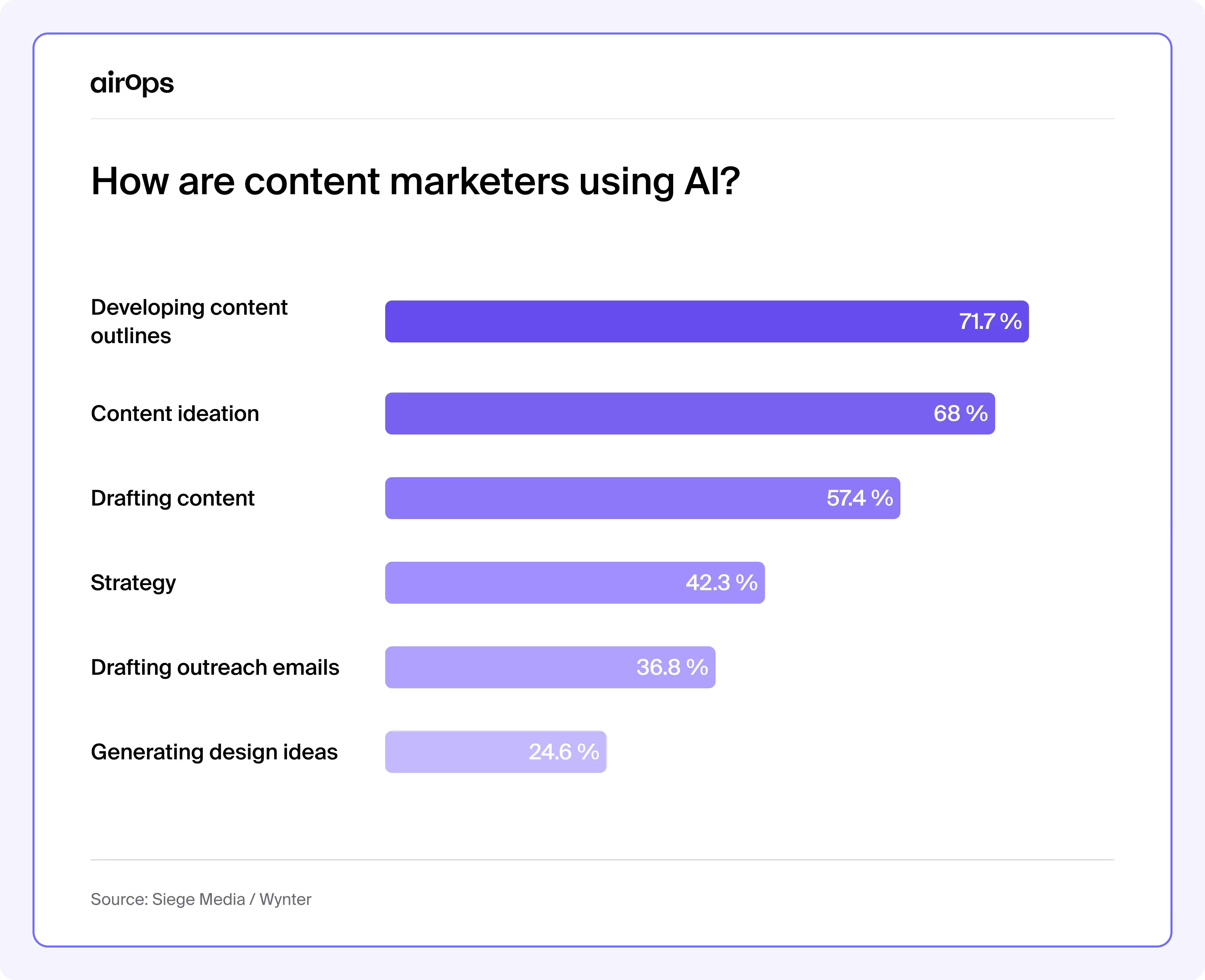
Each of these use cases could be, or used to be, unique jobs on a complete content marketing team. Rather than hiring more writers or adding another layer of approvals, modern teams are automating research, outlines, and optimization tasks. AI-assisted workflows can generate detailed content briefs, extract key stats, and even surface subject-matter expertise that allow writers to focus on creativity and analysis rather than repetitive tasks.
Quality vs. quantity trade-offs
Under pressure to increase volume, teams give up vital quality controls. Subject matter expert reviews get skipped, while fact-checking diminishes. Brand standards steadily erode.
However, in this new era, if your production cycle quickens, you can still publish quickly because most of your time will be spent on writing and creating, not on "pre-work."
More content doesn't mean better results
One of the biggest challenges content teams face is measuring and improving performance at scale. Without clear insights, content efforts often become disjointed, reactive, and difficult to optimize. The data highlights this struggle:
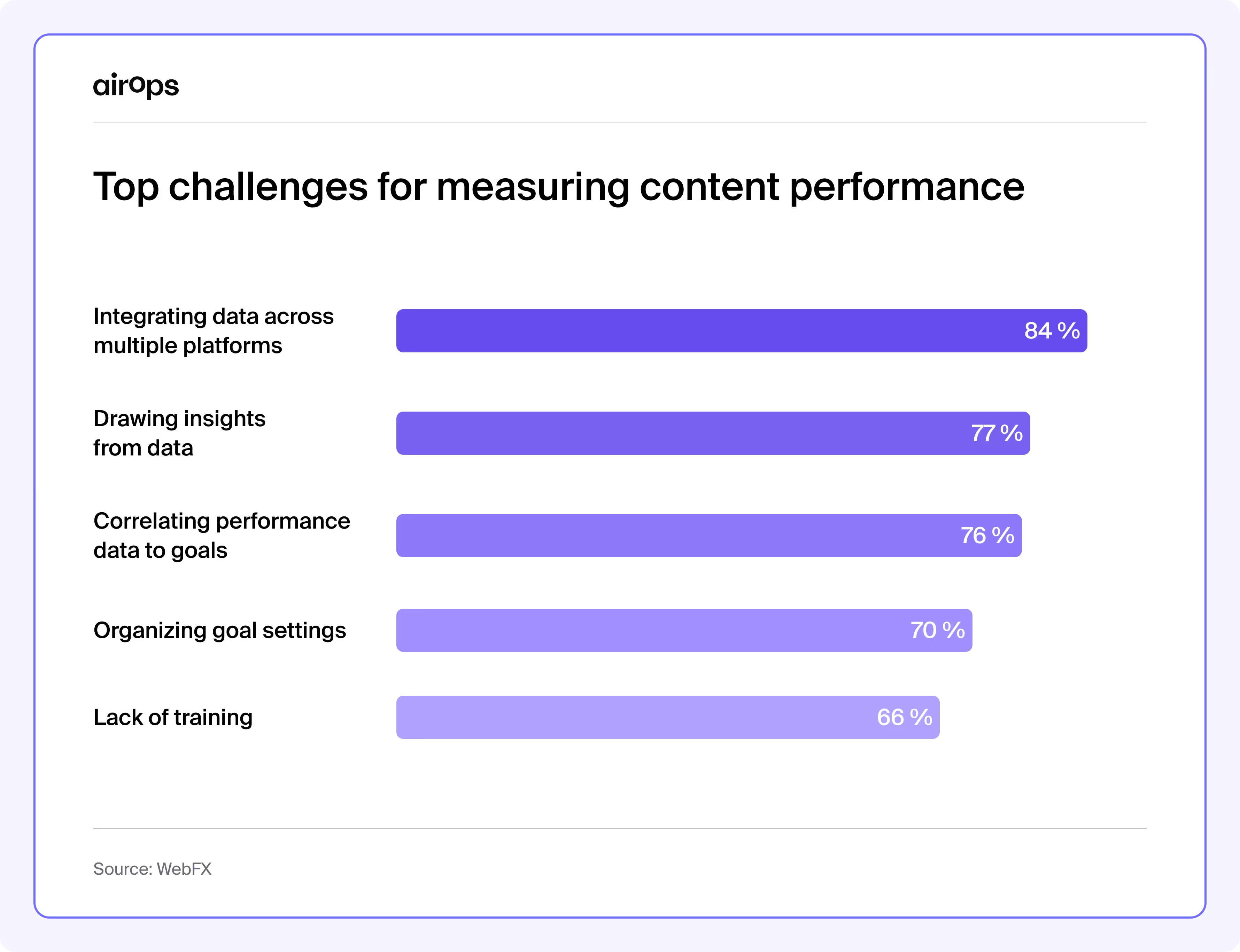
84% of B2B marketers struggle with integrating data across multiple platforms, and 77% find it difficult to draw insights from their data. Without these insights, scaling content efforts becomes a guessing game—teams are left producing more content without a clear understanding of what truly drives results. This lack of clarity leads to inefficiencies, redundant content, and a reactive approach that prioritizes volume over impact. Many assume producing more content equals better results, but the reality is different.
As SEO expert Ryan Stewart notes, there is not a direct correlation between team size and efficacy. Successful content teams aren’t just producing more. They’re producing in smarter ways. AI-assisted tools (like AirOps!) can surface unique customer insights, compile competitive analysis, and even recommend optimal content structures.
With the right strategies and execution, a one person team can effectively outperform a team 10x the size:
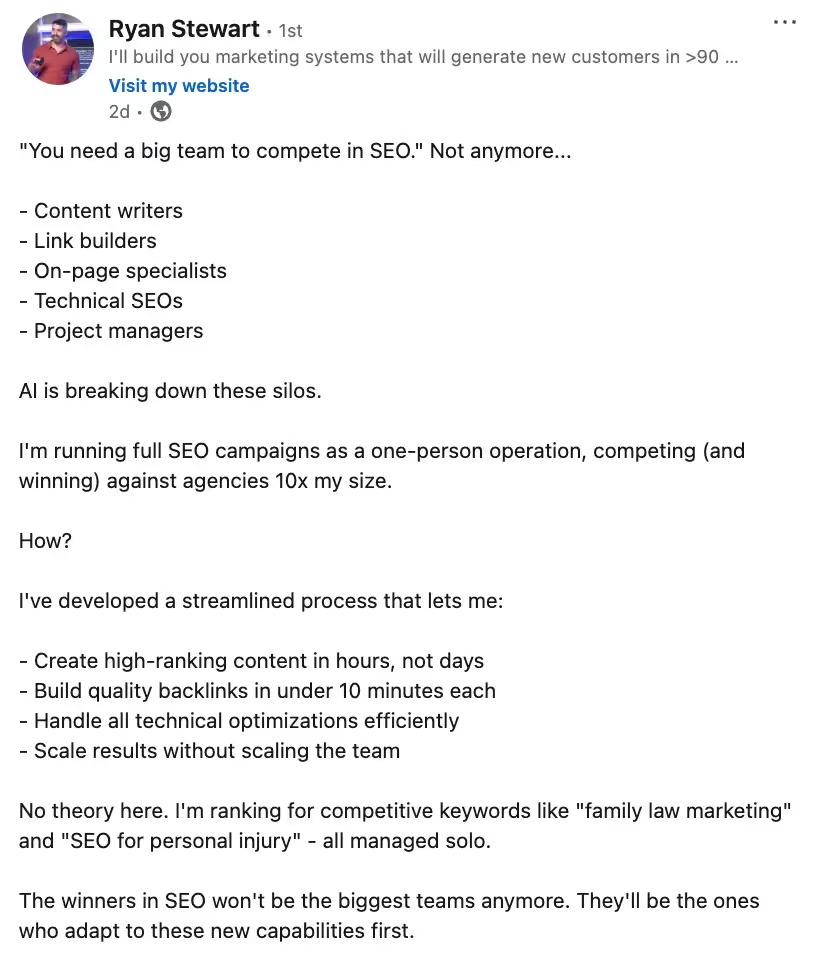
The burden of update and maintenance
Every year, your listicle for XY year has to be updated for the next. As content volume grows, maintaining accuracy becomes impossible.
Teams struggle to update old content while still producing new pieces, leading to stale product information, outdated research, and missed competitive shifts.
- 96% of web pages receive zero traffic from Google, meaning most content never reaches an audience.
- Instead of focusing on velocity, teams must prioritize optimization, distribution, and measurable business impact.
Google’s algorithm changes: When quality loses to scale
Google’s recent updates have deprioritized expert-driven, high-quality content in favor of mass, user-generated platforms like Reddit and Quora.
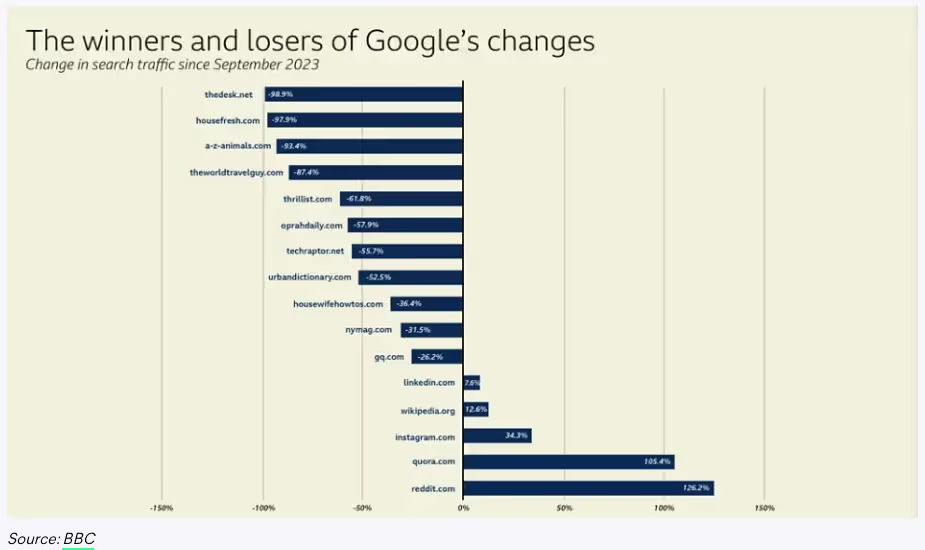
According to Gareth Davies, Product & Content Marketing Lead at KNIME:
"Despite Google claiming to value authoritative content, I don’t see well-researched content with expert quotes being ranked reliably."
This shift forces content teams into a losing game—SEO requires constant content production to maintain rankings, while editorial teams resist sacrificing quality for volume.
The result? A dysfunctional cycle of high output with diminishing returns. Without a clear strategy, content teams are stuck chasing algorithms instead of building long-term value.
Problem Sign #3: The speed problem
Traditional approval workflows can't match market demands:
Approval bottlenecks
Multiple stakeholders mean multiple review cycles. Legal wants liability language. Product checks technical accuracy. Marketing ensures message alignment. Each review adds days or weeks to publication timelines.
Rigid workflows
Fixed processes designed for blog posts break when applied to social content, technical documentation, or video scripts. Teams either force everything through inappropriate workflows or create parallel processes that duplicate effort.
Missed opportunities
Time-sensitive content opportunities slip away during review cycles. Competitor launches, market events, and industry news grow stale while content works through approval chains. These systemic failures reveal fundamental flaws in how content teams operate.
The problems compound in predictable patterns:
- Expertise gets diluted
When SEO teams can't effectively collaborate with editorial, they often resort to post-publication optimization. Writers retrofit keywords into finished pieces, breaking narrative flow. Technical experts grow frustrated with repeated revision requests and become less available for future content.
- Scale creates waste
Teams under pressure to produce more content often create redundant assets. Multiple writers tackle similar topics without knowing about parallel efforts. Technical documentation gets rewritten for marketing purposes instead of being adapted. Content that could serve multiple channels gets siloed in single-use formats.
- Speed degrades quality
Rush jobs become the norm rather than the exception. Writers skip research phases to hit deadlines. Subject matter experts provide quick reviews rather than thorough feedback. Teams cut corners on fact-checking and source validation, increasing the risk of errors.
The solution isn't fixing individual problems - it's rethinking the entire structure of content operations. Success requires new frameworks that address these systemic issues while maintaining quality and scale.
The hidden costs of broken content teams
The true cost of broken content teams goes beyond missed deadlines and quality issues, creating ripple effects across the organization.
As teams struggle with approvals and workflow bottlenecks, competitors seize market mindshare, capitalizing on delayed product announcements and slow industry responses. Poor content performance drives up customer acquisition costs, forcing teams to rely on paid ads to compensate for weak organic traffic, while technical content gaps increase support costs.
Slow content production also leads to revenue leaks. Product pages remain outdated, untold customer success stories, and a lack of sales enablement materials all contribute to potential revenue loss.
The team impact
Broken processes drive top performers away, while subject matter experts disengage, frustrated by endless revisions. With each departure, institutional knowledge fades. Skill development stalls as writers juggle topics, and editors focus more on workflows than mentoring. Creativity suffers under risk-averse processes, forcing teams to stick to safe formats instead of experimenting. As innovation takes a backseat, teams lose their competitive edge.
The content impact
Quality deteriorates when content is rushed and research remains surface-level, leading to shallow insights, factual errors, and an inconsistent brand voice. As teams prioritize speed over polish, the overall impact of their messaging weakens.
At the same time, SEO performance declines as outdated content stagnates and new content lacks depth due to compressed production schedules. Search rankings slip when content quality drops and updates become infrequent. To counteract this, brands should focus on what truly sets them apart—customer needs, authentic customer quotes, and unique solutions to real problems.
Unlike AI-generated content saturating the SERPs, these elements remain timeless and resilient. As Brendan Hufford succinctly puts it, the difference between good and bad content is clear.
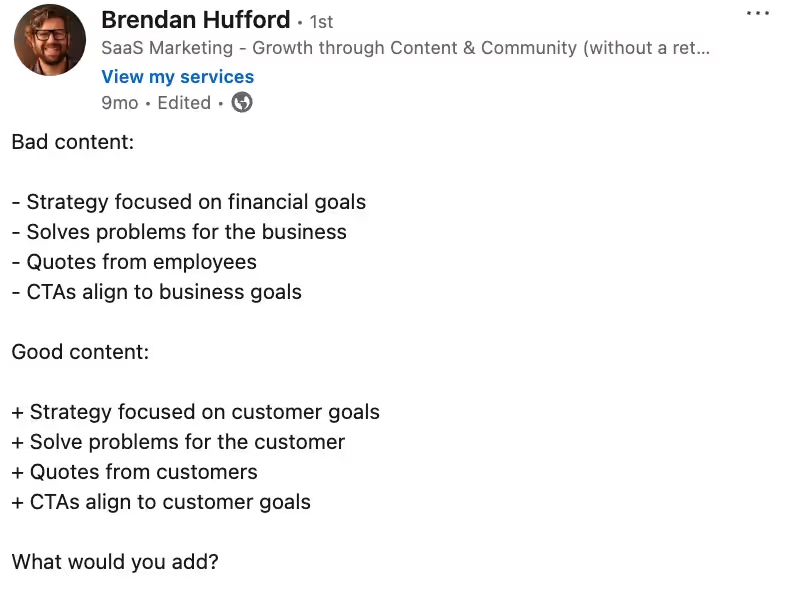
Brand dilution
Inconsistent messaging across channels confuses customers. Technical inaccuracies damage credibility. Poor quality content undermines brand authority, particularly in technical and B2B markets. These costs compound over time.
Each missed opportunity, lost team member, or quality slip makes recovery harder. Organizations often don't recognize the full impact until competitors have built insurmountable leads in content quality and market presence.
Why band-aid solutions fail
Only 5% of content professionals report high efficiency, while 66% acknowledge their operations fall short. Yet when content teams hit walls, organizations reach for quick fixes that make things worse.

Hiring more writers
The logic: Double the writers, double the output.
Why it fails:
- Management needs multiply faster than output
- Senior writers become trainers instead of producers
- Brand voice splinters across growing teams
- Subject matter experts get overwhelmed
- Quality deteriorates as teams scale
Adding process layers
The logic: Strict processes prevent mistakes.
Why it fails:
- Publication cycles stretch from days to weeks
- Creative time gets consumed by meetings
- Strong writers leave, tired of bureaucracy
- Teams create shadow processes to ship anything
- Market opportunities slip away during reviews
Many content teams respond to challenges by adding more processes, meetings, and frameworks in the name of strategy. But too often, this results in a bloated, inefficient system where strategy is more of a concept than a concrete plan.
As Fio Dossetto, Content Lead at Float, puts it:

Without a well-defined, actionable strategy, content teams end up in an endless cycle of doing more without achieving better results. The problem isn’t a lack of effort—it’s that the structure itself is flawed.
Tool proliferation
Better tools solve workflow problems. However, this fails for a variety of reasons:
- Teams juggle dozens of disconnected platforms
- Knowledge scatters across systems
- Training burden multiplies
- Core problems persist beneath new interfaces
- Each solution creates new problems
Ok, what’s the real problem?
These solutions target symptoms while ignoring the disease: traditional content structures fundamentally misalign with modern demands. Thus, core issues persist:
- Knowledge fragments across teams
- Workflows stay rigid and slow
- Quality control weakens
- Scale remains expensive
- Teams burn out faster
Why AI-generated content alone won’t cut it
Many companies rely on AI to mass-produce content, but AI alone won’t build authority. Most AI-generated content pulls from the same sources, creating redundant, low-value material that fails to stand out.
“The AI content that is just getting churned out is pulling from the same top 10 SERP entries as every other AI writer—and human freelance writer, unfortunately. There’s nothing distinguishing it. There’s nothing that makes it feel credible at all.”
For more on this conversation, check out the video below:
To stand out, brands must prioritize expert-driven content that offers unique insights alongside credibility and real-world experience, factors that AI alone can’t produce. While AI supports production, authority comes from original thought leadership and the evidence to back it up.
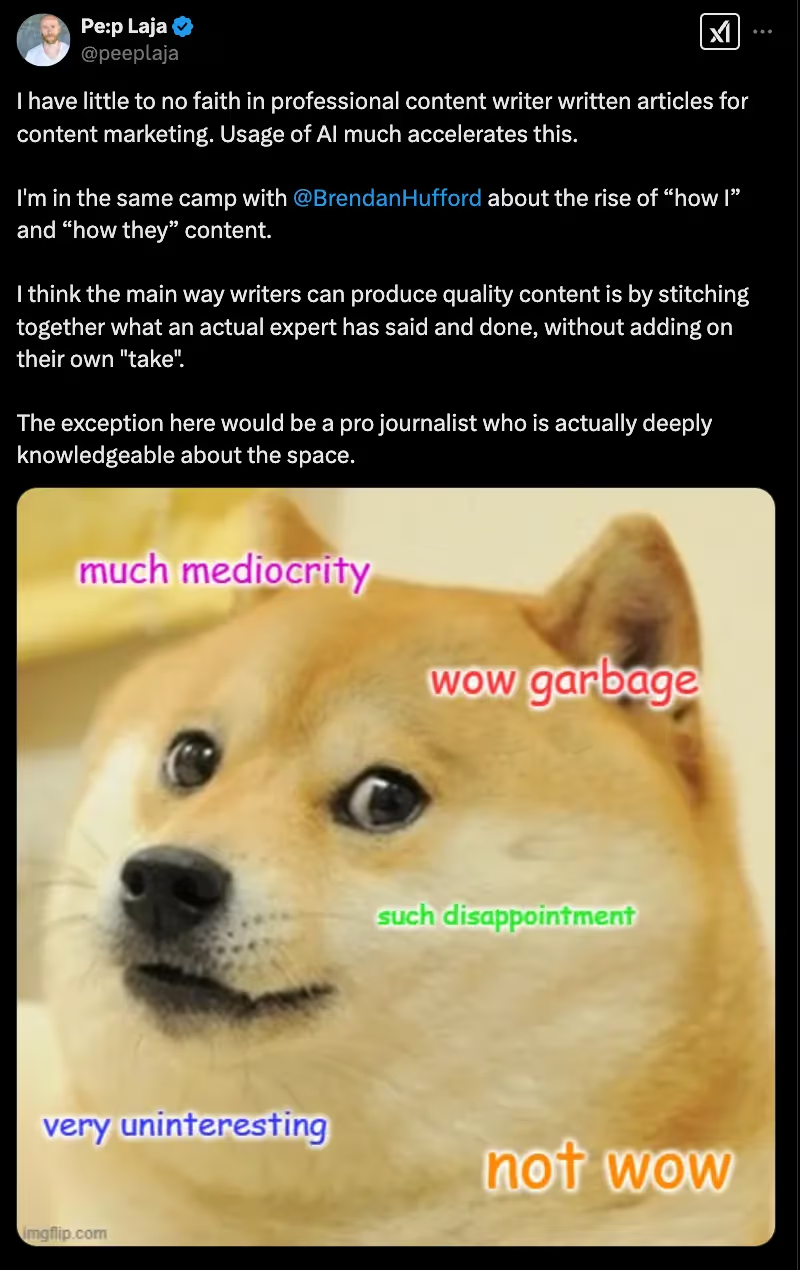
The way forward...
Fixing content teams requires fundamental restructuring, not incremental changes.
Leading organizations are already making three key shifts:
Rethinking team structure
Move from specialist silos to cross-functional pods. The most effective content teams aren’t just restructuring—they’re evolving into something new. One of these could be a Content Engineer: a role that blends technical SEO, editorial instincts, and AI-powered efficiency.
From the Rise of the 10x Content Engineer:
Similarly, the 10x Content Engineer is someone who:
- Thinks in systems
- Blends AI and automation to grow content production with an eye on quality
- Creates repeatable workflows for programmatic SEO, content refresh cycles, and personalized user experiences
- Moves beyond traditional content formats, leverages data-driven insights, AI-generated assets, and dynamic content hubs
Instead of siloed teams and inefficient processes, a content engineer builds and optimizes workflows, ensuring that content is fast, scalable, and high quality.
Reimagining content workflows & production
Replace rigid approval chains with expert guidance systems. Give writers direct access to subject matter experts early in the process. Build quality checks into the writing process rather than relying on end-stage approvals.
Rethink quantity and quality
Focus on systems of content effectiveness: engagement metrics, conversion impact, and search performance. Build systems that help good writers become great rather than trying to make mediocre writers adequate.If you can shorten your content production process, then you will create more articles and content. Yes, your quantity will increase and your quality may even get better.
The organizations succeeding at content aren't just producing more - they're producing differently. They're building teams around audience needs rather than content types. They're investing in the processes to get writers the research and information they need when they need it:
Think about AI workflows for:
- Surfacing key industry stats
- Finding amazing customer quotes
- Immediate topic ideas, briefs and outlines from an SME conversation
Most importantly, they're creating structures that can evolve as content demands change.
Content teams stand at a crossroads.
Continue with broken systems and watch competitors pull ahead, or rebuild for the demands of modern content operations. The choice seems obvious, but the path forward requires change.
We'll explore specific transformation strategies in upcoming pieces, diving deep into team structures, workflow design, and scaling methods that work.
- How is your content team handling these challenges?
- What structural changes have you tried?
- What's working, and what isn't?
The future of content operations will be built by teams willing to question everything - including how we collaborate and learn from each other.
Enjoyed this? Get our latest insights every week. Drop us a line or give us your feedback at growth@airops.com
Win AI Search.
Increase brand visibility across AI search and Google with the only platform taking you from insights to action.
Get the latest on AI content & marketing
Get the latest in growth and AI workflows delivered to your inbox each week





.avif)
.avif)
